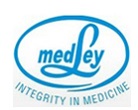Dry granulation:
- Slugging (Traditional approach)
It is also called slugging, precompression or double compression method. It is the cheapest method of granulation and is suitable for heat and moisture sensitive products. In this method, the mixture of powders are compressed into slugs on specially designed tablet machines without using heat and solvent followed by milling the compact mass into granules.
Slugs: slugs are flat faced large size tablets (compact mass) which are made under heavy pressure on tablet press. These slugs are then are then milled or broken to suitable size granules by passing through an oscillating granulator fitted with sieves No.10 and No.20. The resultant granules are mixed with lubricants and other necessary additives or excipients, and then they are compressed into finished tablets in the usual way.
Equipment:
- Machine for compressing the dry powders into slugs or compacts.
- Mill for breaking these slugs into granules
In this method powders are compacted using conventional tablet machine. Blend of powders are forced to large capacity dies and compacted by large faced punches. If a tablet press is used for the compaction process, the term slugging is used. But since particles with a small particle size do not flow well into the die of a tablet press, the results are weight differences from one tablet (slug) to another. and then the slugs are milled by using suitable mill and screen.
2. Chilsonation: (Current Approach)
In this method roller compactor is used, which is also called chilsonators and the process of compaction is called chilsonation. It utilises two rollers that revolve towards each other and one of the roller forces against each other by hydraulic pressure. Volume decreases through the region of maximum pressure and material is formed into solid compacts or sheets.
During rolling the material in the nip region moves downward at a rate less than the surface speed of the rolls.

The material is trapped by the rolls in the nip region and is moving at the same speed as the roll surface. This forces the material through the region of maximum pressure, which is on a line between the centers of the two rolls.The force or pressure on the material between the rolls is supplied by a hydraulic cylinder. This cylinder acts upon the floating roll which can move horizontally depending upon the volume of feed and the pressure being applied.

Factors affecting the compaction:
- Characteristics of material to be processed
- Surface and diameter of roll
- Feed screw design
- Peripheral speed
- Separating force
Roll surfaces: The selection of the roll surface for a selected application depends upon the compaction characteristics of the material.
- Powders that tend to stick to the roll surface must be scraped clean with each revolution requiring the use of smooth grooved surfaces.
- Finely ground powders of low permeability that are readily fluidizable require the use of axially grooved rolls.
- Compacted products that release cleanly from the roll may be pressed with one of the pocketed design or grooving in the axial direction.
Feeder design: The downward force on the material fed to the rolls, can change the nip angle and nip region by changing the slippage between material and roll surface. The greater the downward force, the larger the volume of material that can be compacted.
Granulation: After compaction, the compacted product is granulated to a uniform particle size distribution by granulator. The granulator is designed with maximum flexibility enabling the processor to control the size reduction of the compact with predictable and repeatable results. Granulators are loaded with blades with a knife edge for producing coarse or large particles, and flat or impact edge for finer particles. The granulator can easily be fitted with compactor for contoinous process.
The three main variables of granulator are: blade shape, rotor speed and screen opening size.
Below the granulator, screen is fitted which is perforated metal plate and is available in different ranges for various purposes.
Conveying of powders: Vertical and horizontal screw conveyors
- Horizontal screw picks up the powder from hopper and maintains continuous flow to vertical screw.
- Vertical crew delivers powder to rollers and serves to deaerate powders and maintains constant flow on to rollers.
Compaction force: It is controlled by three variables
- Rotational speed of rollers
- Rotational speed of feed screws
- Hydraulic pressure on roller
Automation of Chilsonator: Automated control system of chilsonator is designed to get maximum control for process and data monitoring. The system includes a Programmable Logic Controller which is connected to an Operator Interface Station.Features of the Chilsonator Automated Control System include:
- On-Line Help and Diagnostic Functions
- Programmable Recipes
- Maintenance Screen
- Calibration ScreenOperator Interface
- Roll Gap Control
- Alarm Management Restricted Access of Various Functions
- Historical Trending
- Report Generation
Testing of compaction uniformity
- Set rollers speed at lowest rate and set feed screw at highest speed
- If the powders are compactable in the first pass the machine will overload
- When this happens the compaction roll speed should be increased until loading constant.
- If no overloading occurs powder should be pass through second time, using same procedure.
Advantages:
- Utilisation of roller compaction method produces granules with extraordinary combination of flowability and compressibility.
- Mechanical strength of the product is uniform.
- It is very economical process of granulation.
- No use of heat and moisture or solvent as comapred to wet granulation
- improvement in product stability
- It is very useful method for thermolabile and moisture sensitive drugs.
- improvement in disintegration time,
- granules becomes porous and highly compressible
Disadvantages:
- Requires specialised heavy duty tablet press.
- product becomes very friable.
- Create more dust as compare to wet granulation.
- It does not allow uniform colour distribution.
- Increases the chances of cross contamination.
- Poor recycled granule quality











